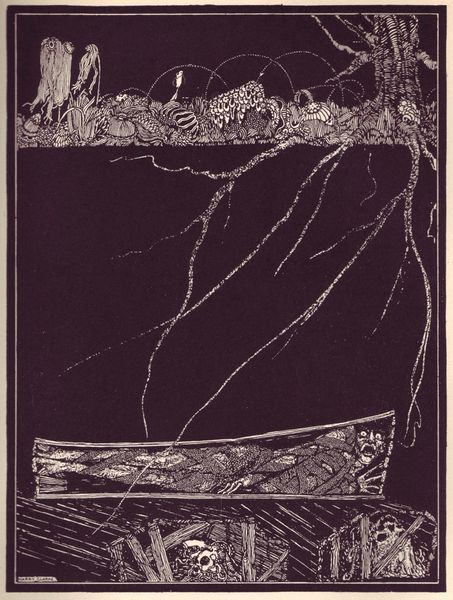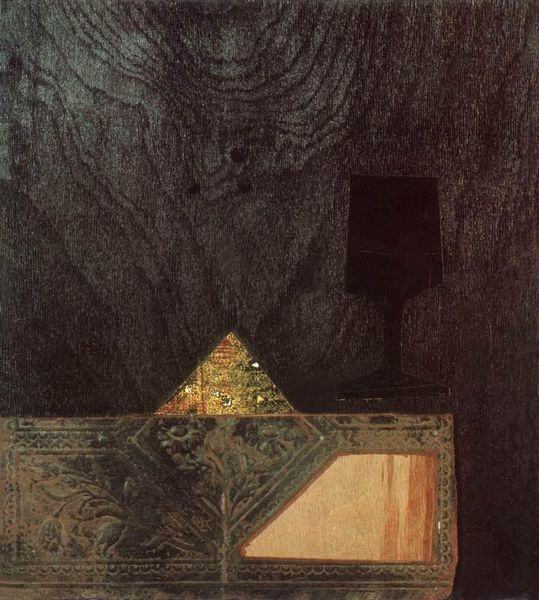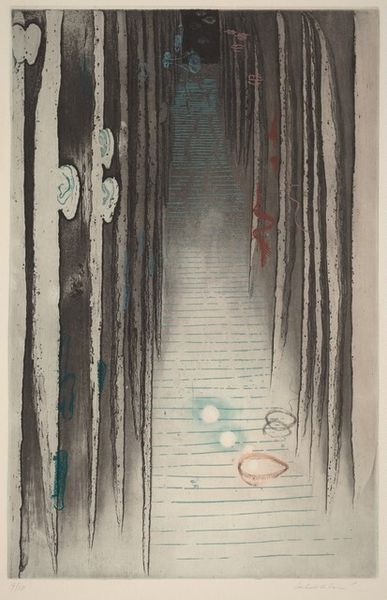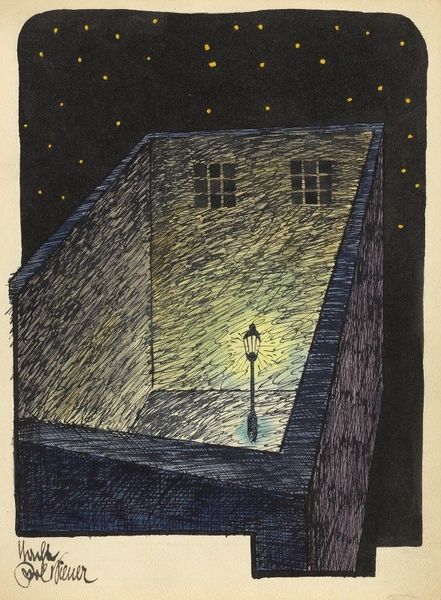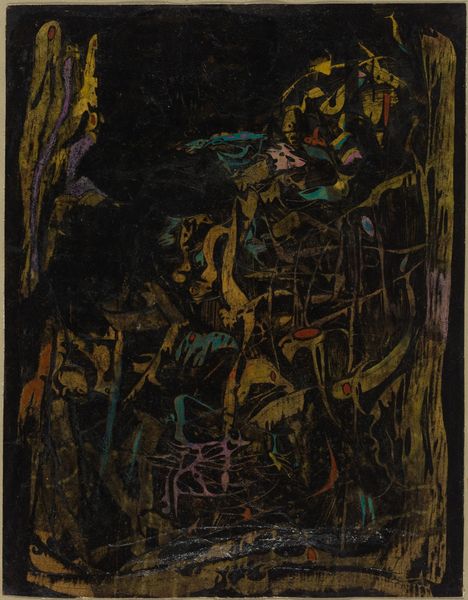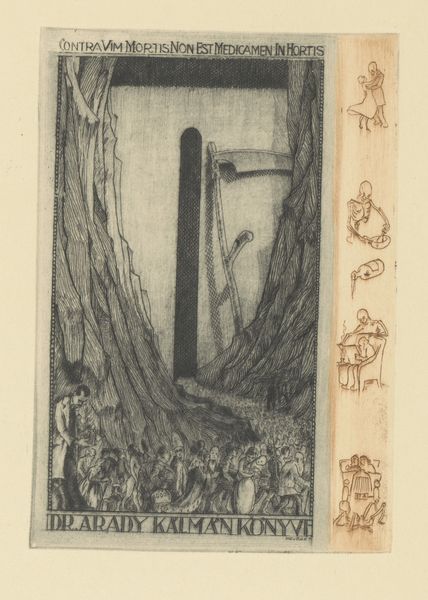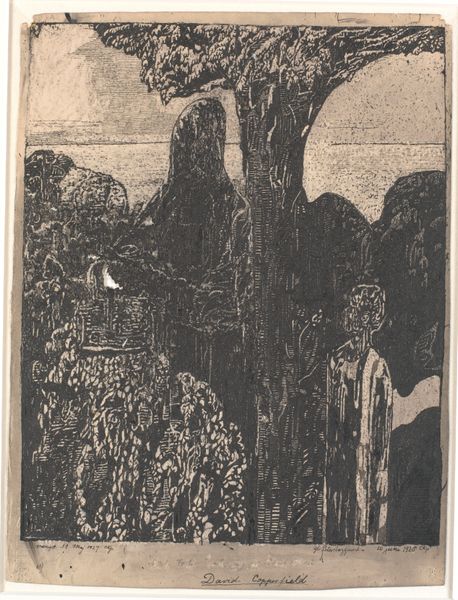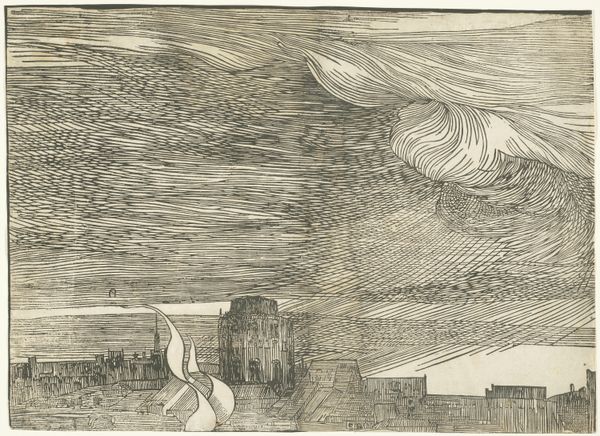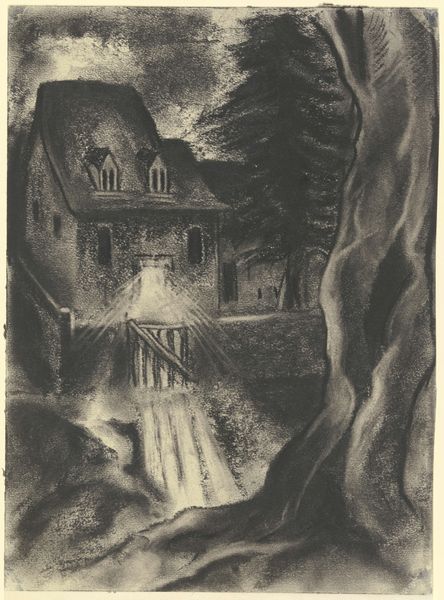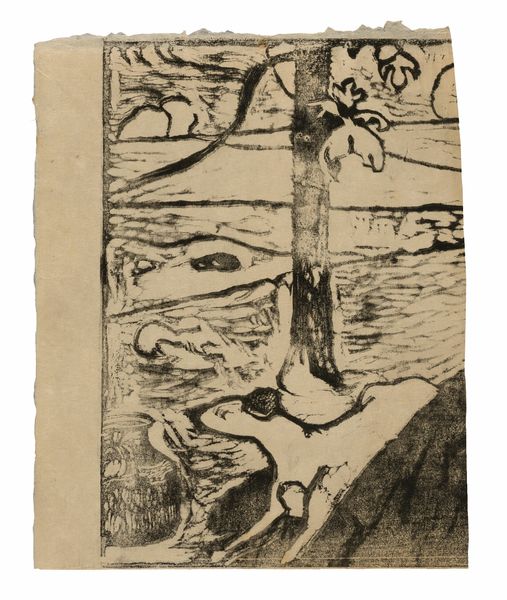
Dimensions: support: 3247 x 2188 mm
Copyright: © Anselm Kiefer | CC-BY-NC-ND 4.0 DEED, Photo: Tate
Curator: Anselm Kiefer's monumental work, "Parsifal II," part of the Tate collection, really stops you in your tracks, doesn't it? The sheer scale of it, over three meters tall, is just the start. Editor: It feels like walking into someone's memory, a stark, almost haunted space rendered with such visceral textures. That wooden floor seems to go on forever. What's with the swords? Curator: Kiefer often grapples with German history and mythology. Here, the swords evoke the Arthurian legend of Parsifal, a knight on a spiritual quest. It’s fascinating to consider how Kiefer reinterprets this quest within a contemporary, post-war context. Editor: So, the rough, almost brutal application of materials, the stark light, it's all meant to evoke a sense of searching, of reckoning with the past? Curator: Precisely. And think about how institutions, like the Tate, grapple with displaying artwork that might be considered controversial, or challenging. It's a constant dialogue. Editor: I see what you mean. Even the act of displaying it becomes part of the narrative. It makes me wonder what other untold stories are hiding within the wood grain.
Comments
Join the conversation
Join millions of artists and users on Artera today and experience the ultimate creative platform.
tate 6 months ago
⋮
This painting refers to Parsifal’s defeat of the evil knight Ither, whose name appears beside his broken, blood-spattered sword. Parsifal’s mother, Herzelayde, had tried to raise her son in ignorance of the violent chivalry of his ancestors. Her efforts failed, however, and Parsifal, whose sword is depicted here as gleaming and intact, went on to become a knight. Kiefer may have seen a parallel between Parsifal’s peaceful upbringing and the attitude of the post-war generation in Germany, scarred by the brutality of their country’s recent history. Gallery label, September 2004
